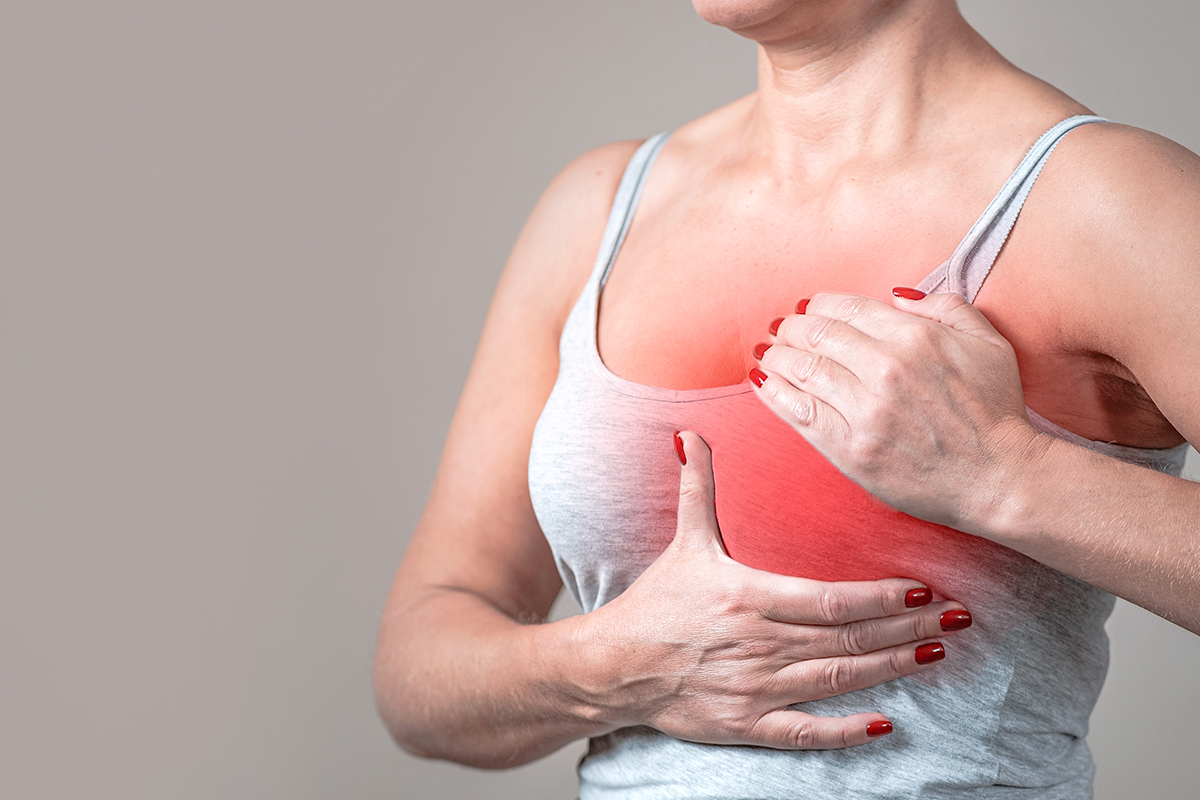 October 8, 2022
October 8, 2022
Did you know that one Indian woman is diagnosed with breast cancer every four minutes?
Breast cancer cases are increasing in India one of the most common cancers in Indian women. This rising trend necessitates an open and honest discussion about how breast cancer is– from diagnosis to treatment, to living with metastatic breast cancer, to life after treatment ends. The need of the hour is to bridge the gap and enrich our understanding. Let's get started.
What is breast cancer?
Breast cancer occurs when cells of the breast tissue divide and grow uncontrollably. These abnormal cells grow faster than the surrounding healthy cells and keep adding up to form a lump. Some cells may move from the breast to lymph nodes or different regions of your body. This process is known as metastasis.
At times, inherited gene mutations lead to breast cancer. For instance, breast cancer gene 1 (BRCA1) and breast cancer gene 2 (BRCA2) vastly increase the risk of breast and ovarian cancer, so someone with a family history of cancer needs to know their risk and undergo screening.
What are the symptoms of breast cancer?
Signs and symptoms of breast cancer may include:
What are the risk factors?
Although risk factors increase the likelihood of developing cancer, it
doesn't imply you will get it. Nevertheless, some factors that put you at a higher risk of breast cancer are:
Gender
Breast cancer is much more likely to happen to women than to men. But it’s important to know that men can also get breast cancer.
Age
As you age, the likelihood of developing breast cancer goes up. Hence, screening is a must.
Family history of breast cancer/ovarian cancer/tubal or peritoneal cancer
If your mother, sister, or daughter had any of the above cancers, especially when they were young, the probability of developing breast cancer is high.
Nonetheless, many patients with breast cancer may not have a history of the disease in their family.
The onset of the period at an early age
If you get your period before you turn 12, you are more likely to get breast cancer.
Menopause at an older age
If you experience menopause later in life, the risk of getting breast cancer becomes high.
The timing of the first pregnancy
Women who have their first child at a later stage (after 30 years) may be more likely to get breast cancer.
Having never been pregnant
Women who have never previously been pregnant are more likely to get breast cancer than women who have been pregnant at least once.
Hormone therapy after menopause.
Women who take estrogen and progesterone as part of hormone therapy to treat the signs and symptoms of menopause are more likely to get breast cancer.
Previously diagnosed breast cancer
If a patient has had breast cancer, the risk of recurrence is higher. In addition, if you've had breast cancer in one breast, you're more likely to get it in the other breast.
Who decides my risk?
A medical professional, ideally a Surgical Oncologist who treats breast cancers. Having a single affected relative in one's family is not enough to categorize someone as a high-risk candidate for breast cancer; other factors must also be considered. You should contact a doctor to determine how likely you are to develop cancer.
Which doctor should I consult?
Preferably, you should consult a Surgical Oncologist.
If not, you can always consult a General Surgeon because they specialize in surgical procedures and manage various medical conditions, including breast lumps. If you can't visit a surgeon, your family doctor should be able to recommend a mammography center and later suggest a surgical oncologist.
What can I do to prevent the disease?
A combination of screening tests and clinical preventive procedures can be adopted to reduce the risk factors related to breast cancer.
Screening tests
The term “screening” refers to the practice of detecting cancer before the onset of symptoms. Hence, regular screening tests can identify breast cancer at an early, more treatable stage.
The guidelines for breast cancer screening are as follows:
Women with a high risk of developing the disease
The following are the recommended screening criteria for women at high risk of developing breast cancer:
Women over 40 years old
The following are the recommended screening criteria for women over the age of 40 who do not have a family history of breast cancer or any other risk factors :
Women between 25 to 40 years of age with an Average Risk
The following are the screening criteria for women between the ages of 25 and 40 who do not have a family history of breast cancer or any other heightened risk factors:
Preventive surgery
Many women, especially those with a family history of cancer or genetic mutations, may decide to remove their healthy breasts to lower the risk of breast cancer.
Preventive medicines (Chemo-prevention).
Medications that block estrogen, like selective estrogen receptor modulators and aromatase inhibitors, may lower the risk of breast cancer in women who are more likely to get the disease. Because of the side effects, doctors prescribe these medicines to women with very high risk of breast cancer only and according to the patient profile.
If you experience any symptoms related to Breast Cancer, don't delay consulting your doctor. Receiving the proper medical treatment and care is the only way to steer clear of any related medical complications.
To book an appointment, contact us at +91-9540 114 114.



2026 © SSB Heart and Multispecialty Hospital.